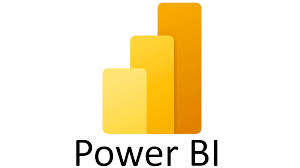Power BI

-
Career
- Data Analytics Scope
- Data Analytics Faculty Name
- Nikhil Khaneja Duration
- 25Hr

About this course
Power BI is a powerful business analytics tool used for visualizing data and sharing insights across an organization. It's widely used for data analysis and business intelligence. Here are some common uses and key features typically covered in a Power BI course: Common Uses of Power BI Data Visualization: Create interactive and visually appealing reports and dashboards. Use a wide variety of charts, graphs, and other visualizations to represent data. Data Analysis: Perform in-depth data analysis using Power BI’s tools. Use DAX (Data Analysis Expressions) to create custom calculations and measures. Data Integration: Connect to various data sources such as Excel, SQL Server, cloud services, and more. Combine data from multiple sources into a single, coherent data model. Real-time Analytics: Monitor live data and create real-time dashboards. Use Power BI’s streaming capabilities to visualize data as it updates. Collaboration and Sharing: Share reports and dashboards with colleagues. Embed reports in apps or websites. Collaborate on data analysis with team members using Power BI Service. Key Features Covered in Power BI Courses Power BI Desktop: Introduction to Power BI Desktop. Importing and transforming data. Creating and managing data models. Building reports and visualizations. Power Query: Data extraction, transformation, and loading (ETL) using Power Query. Cleaning and shaping data. Merging and appending queries. DAX (Data Analysis Expressions): Understanding DAX syntax and functions. Creating calculated columns and measures. Advanced DAX concepts like time intelligence, filters, and context. Power BI Service: Publishing reports to the Power BI Service. Creating and sharing dashboards. Using workspaces for collaboration. Power BI Mobile: Accessing and interacting with Power BI reports and dashboards on mobile devices. Configuring mobile layouts for reports. Power BI Gateways: Setting up and using gateways to connect to on-premises data sources. Advanced Analytics: Incorporating R and Python scripts into Power BI. Using AI and machine learning features in Power BI. Power BI Report Server: Deploying reports to Power BI Report Server. Managing on-premises report infrastructure. Practical Applications Sales and Marketing: Track sales performance, analyze customer data, and optimize marketing strategies. Finance: Monitor financial performance, create budget forecasts, and analyze expense data. Operations: Streamline operations, manage inventory, and track supply chain metrics. Human Resources: Analyze employee performance, track recruitment metrics, and manage payroll data. Getting Started with Power BI Download Power BI Desktop: It's free to download and use for creating reports and visualizations. Explore Online Resources: Microsoft offers comprehensive documentation, tutorials, and community support. Take a Course: Online platforms like Coursera, Udemy, and LinkedIn Learning offer courses ranging from beginner to advanced levels. Practice: Use sample data sets to practice building reports and dashboards. By leveraging Power BI's capabilities, businesses can gain actionable insights, make data-driven decisions, and drive strategic initiatives effectively.